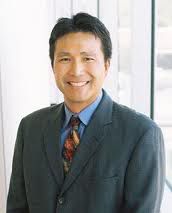Getting Concentrating Solar Power (CSP) Off the Ground

It seems that this subject: how does one get a CSP project off the ground – is the core concept of a trade show, the CSP Project Development Conference & Expo, coming in Denver in October. The show claims to assemble external decision-makers, lobby groups and government organisations to discuss how to solve CSP development hurdles and increase their speed to market. I think I might check this one out.


![[The Vector] Renewable Energy News From Around the Country](http://2greenenergy.com/wp-content/uploads/2010/07/Ken-Salazar-courtesy-DOI.jpg)

 When we talk about a “level playing field” for renewables, we mean that we simply hope for a day in which the incentives to generate energy from fossil fuels are removed and the energy industry and its customers must pay the full costs. We feel that more or less immediately, this will cause renewable energy to be perceived as a considerable bargain.
When we talk about a “level playing field” for renewables, we mean that we simply hope for a day in which the incentives to generate energy from fossil fuels are removed and the energy industry and its customers must pay the full costs. We feel that more or less immediately, this will cause renewable energy to be perceived as a considerable bargain.
 Renewable energy legend Bill Paul has recently agreed to write financial reports and newsletters for us at 2GreenEnergy. We’re delighted to have come across such good fortune, as there really is no one more qualified for the task. Bill retired from the Wall Street Journal after a 20-year stint as a staff writer covering the energy sector, and gave a great interview of the
Renewable energy legend Bill Paul has recently agreed to write financial reports and newsletters for us at 2GreenEnergy. We’re delighted to have come across such good fortune, as there really is no one more qualified for the task. Bill retired from the Wall Street Journal after a 20-year stint as a staff writer covering the energy sector, and gave a great interview of the 
 For 14 years, Rona Fried has worked hard to tell an important story: there are numerous, potentially
For 14 years, Rona Fried has worked hard to tell an important story: there are numerous, potentially 
 If you believe that “The best way to clean energy is not to use it in the first place,” I can’t image that you’ll find a company doing a better job along these lines than Echelon — and its spokesperson Steve Nguyen, who helped me with this chapter of the
If you believe that “The best way to clean energy is not to use it in the first place,” I can’t image that you’ll find a company doing a better job along these lines than Echelon — and its spokesperson Steve Nguyen, who helped me with this chapter of the 
 Rick Sikes manages the vehicle fleet for the City of Santa Monica – a municipality that has taken quite a progressive stance with respect to environmental stewardship. Rick did a great job in our conversation that became the
Rick Sikes manages the vehicle fleet for the City of Santa Monica – a municipality that has taken quite a progressive stance with respect to environmental stewardship. Rick did a great job in our conversation that became the 
